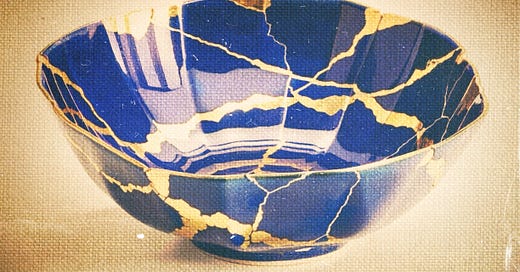Audio narration by David Marlow
In Japan, a broken ceramic object, such as a bowl or vase, is repaired using the art of Kintsugi, which features lacquer dusted or mixed with powdered gold, silver, or platinum.
Kintsugi, like wabi-sabi, symbolizes the idea that an object's use and wear enhance rather than diminish its worth.
The past harm and repair are honored as part of the history of an object and improved upon rather than being attempted to be hidden.
In many cases, the value of a bowl that has undergone kintsugi restoration may be higher than that of an unbroken bowl.
Much like a broken bowl, we suffer damage in our lives. How we respond, react, and repair makes all the difference.
Imagine trying to repair a bowl with superglue to put it back together like it was. Trying to conceal it only makes it worse. There is no hiding the fact the bowl was broken, and the super glue only emphasizes the fact.
Instead, envision embracing the scars, the wear and tear, and the broken elements.
That’s what a Kintsugi artist does. They embrace imperfections and incorporate them into the beauty of the piece.
We chose whether we remain a broken bowl with visible lines or something more beautiful for having lived through the experience.
Kintsugi artisan Yukiko Kuroda described it like this, “I’m restoring a piece of pottery, but I’m also restoring myself.”






I love Kintsugi. Such a beautiful healing metaphor!
"we suffer damage in our lives. How we respond, react, and repair makes all the difference."
Beautiful reminder— Thank you David.